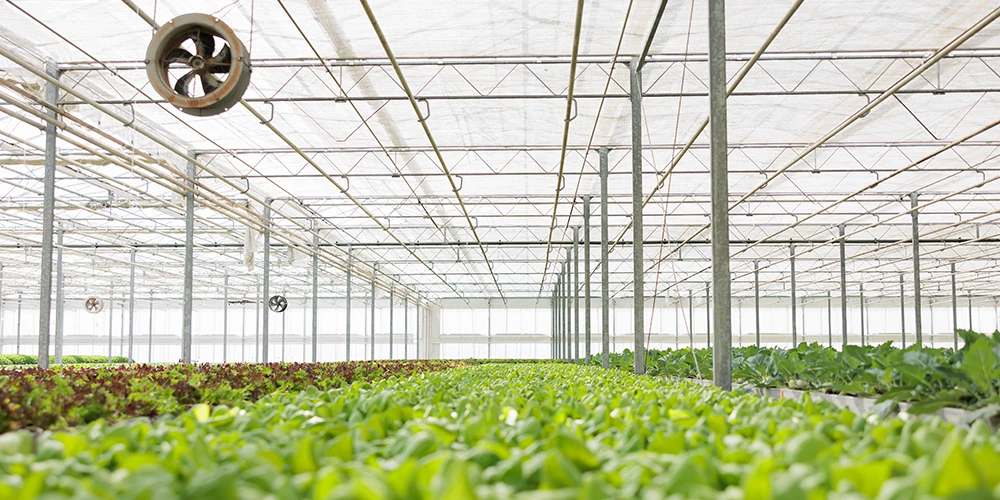Benefits of LED Grow Lights on Environmental Control
As climate change and resource scarcity continue to challenge traditional farming methods, advanced growing methods like vertical farms and shipping containers have emerged as a beacon of hope for sustainable food production. Controlled Environment Agriculture (CEA) has been widely adopted to provide an optimal environment for plants, balancing temperature, humidity, CO2 levels, lighting, and other factors. Within this innovative landscape, LED grow lights stand out as a leading technology, offering multiple benefits for environmental control. From precise light spectrum to reduced heat output, LED grow lights play a critical role in optimizing environmental conditions for plant growth.
Traditional lighting issues
Traditional lighting systems, such as HID and HPS, have long been the standard for indoor and greenhouse cultivation. However, these conventional methods come with a host of issues that impact both crop production and environmental sustainability.
One of the primary concerns with traditional grow lights is their high energy consumption. They require more electricity to operate, leading to higher energy costs and a larger carbon footprint. Additionally, these traditional lights produce excessive heat, which can create challenges in maintaining optimal growing conditions. Excessive heat can stress plants, necessitate additional cooling systems, and increase operational costs. Beyond the temperature woes, traditional lighting often lacks precise spectrum control. The fixed spectrum may not be ideal for all growth stages or plant varieties.
Benefits of LED grow lights on environmental control
The aim of CEA is to provide protection and maintain optimal growing conditions throughout the development of crops. LED grow lights, with their high efficiency, customizable light spectrum, low heat generation, hazardous-free materials, and long lifespan, make CEA easier and more effective. LED grow lights also contribute to more sustainable cultivation.
Energy efficiency and cost savings
LED grow lights are known for their high energy efficiency. They can cut energy consumption by up to 75% compared to HPS lights. Moreover, a 250W LED grow light can directly replace a 1000W HPS light. This can significantly reduce your energy use and electricity costs. It also translates into fewer replacements and less waste, making LEDs cost-effective.

Reduced heat generation
LED grow lights stand out in the horticultural industry for their reduced heat generation, a critical factor in environmental control. Studies have shown that replacing a 1000W HPS lamp with a 250W LED system can decrease grow room temperature by a significant 10°F. Cooler temperatures not only benefit your plants but also reduce ventilation needs, leading to substantial energy savings on your electricity bill.
Precise spectrum control
Plants require different wavelengths of light at various stages of growth. For instance, during the vegetative stage, they thrive under a light spectrum rich in blue and white wavelengths. LEDs allow you to create this ideal spectrum, promoting vigorous growth and stronger stems. As your plants transition to the flowering stage, LEDs let you adjust the spectrum to include more red wavelengths, encouraging vibrant flower production and potentially higher yields.
Improved yields
Studies show that PPFD (Photosynthetic Photon Flux Density) plays an important role in yields. While HPS lights have a PPFD of about 200 to 250 µmol/m²/s, LED grow lights can reach a PPFD of 300 µmol/m²/s. Generally, a 1% rise in PPFD can achieve a 1% increase in yields. Therefore, LED grow lights significantly improve yields.
Furthermore, precise light spectrums with LEDs promote not just faster growth but also stronger, healthier plants. Blue-rich spectrums during the vegetative stage encourage thicker stems and robust foliage, leading to a more supportive structure for future flower or fruit production. This translates to potentially higher yields and a bountiful harvest.

Reduce the risk of disease
Fungal diseases can wreak havoc on greenhouses and indoor farms, turning vibrant crops into a soggy mess. However, with LED grow lights, you can create a more disease-resistant environment for your plants.
Fungal spores thrive in warm, humid environments. The cooler grow room temperatures maintained by LEDs make it less hospitable for these harmful microbes. The lower heat output of LEDs also means less need for constant ventilation. This minimizes the influx of airborne spores and other contaminants that can introduce disease into your grow room.
Humidity management
Did you know about VPD? Vapor Pressure Deficit (VPD) – the difference between the air's moisture content and its capacity to hold moisture – plays a crucial role in plant health. If the air becomes saturated, condensation forms on your crops, creating a breeding ground for disease. An HVAC system might not be effective in managing VPD if you are not using LED grow lights. LEDs emit minimal heat, keeping your grow room cooler. This translates to less moisture being lost through evaporation from plant surfaces.
LED grow lights bring various benefits to environmental control. It is clear that LED technology is not just a trend but a transformative force in horticulture. From energy savings to enhanced plant growth, LEDs offer a beneficial path forward.
Ready to make the switch to LED grow lights? Contact us.

